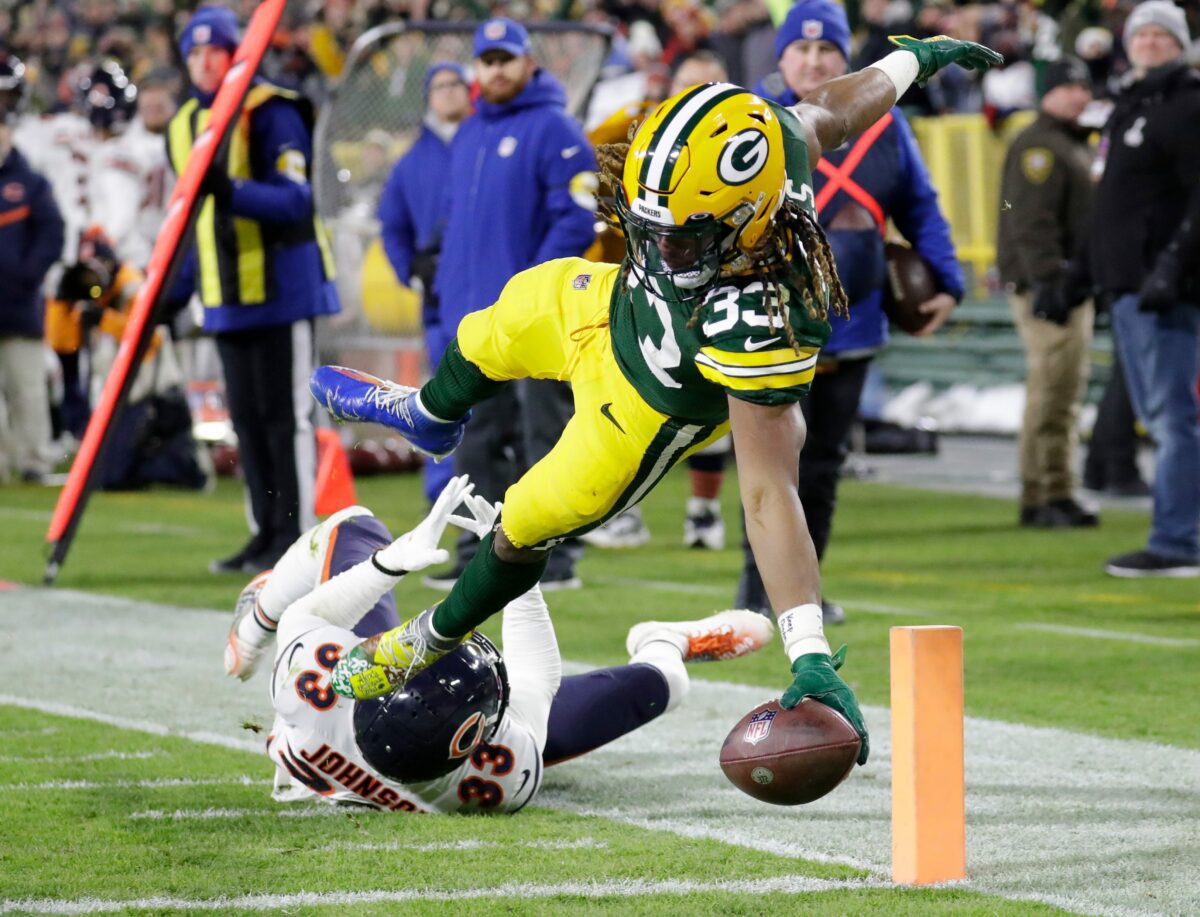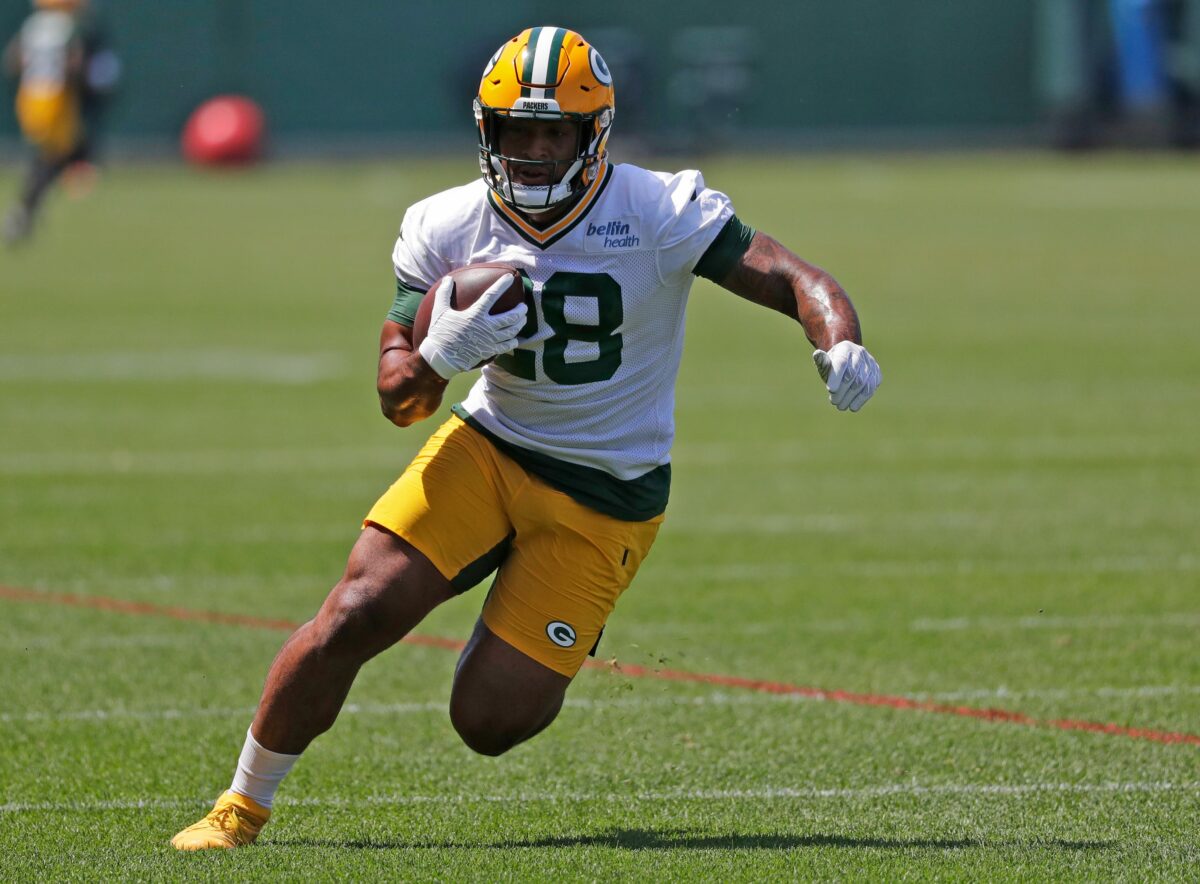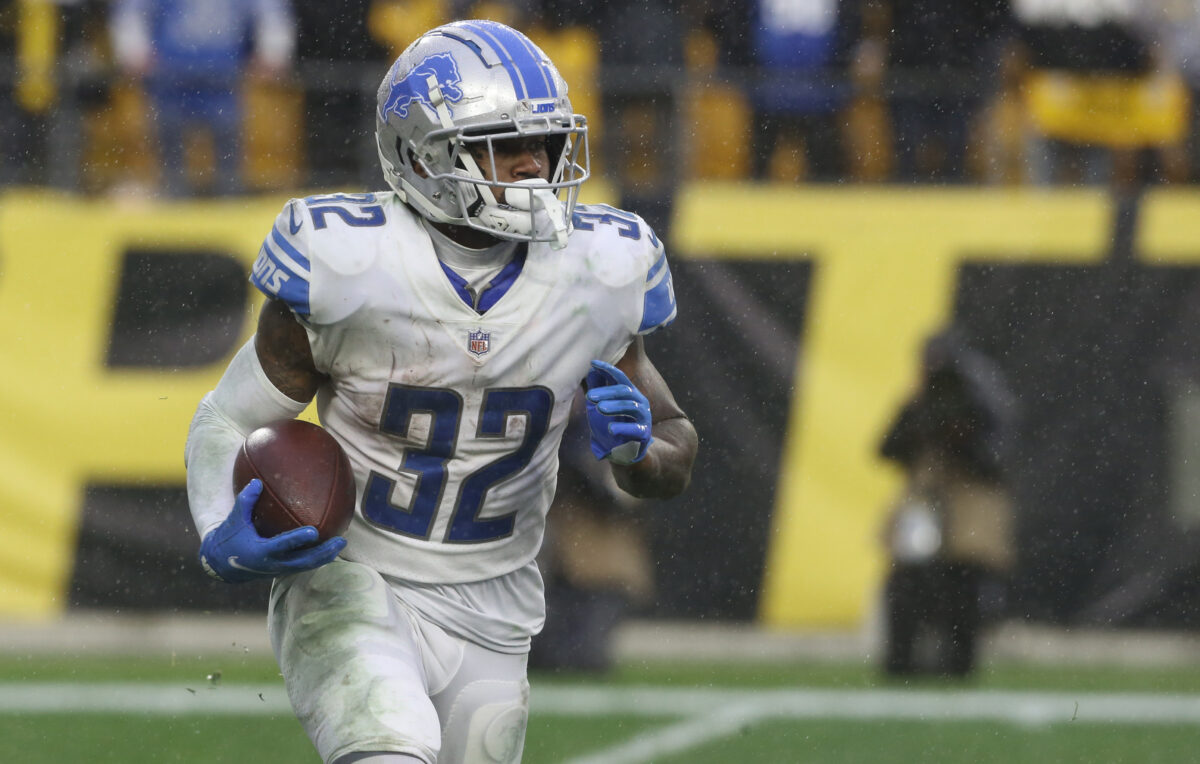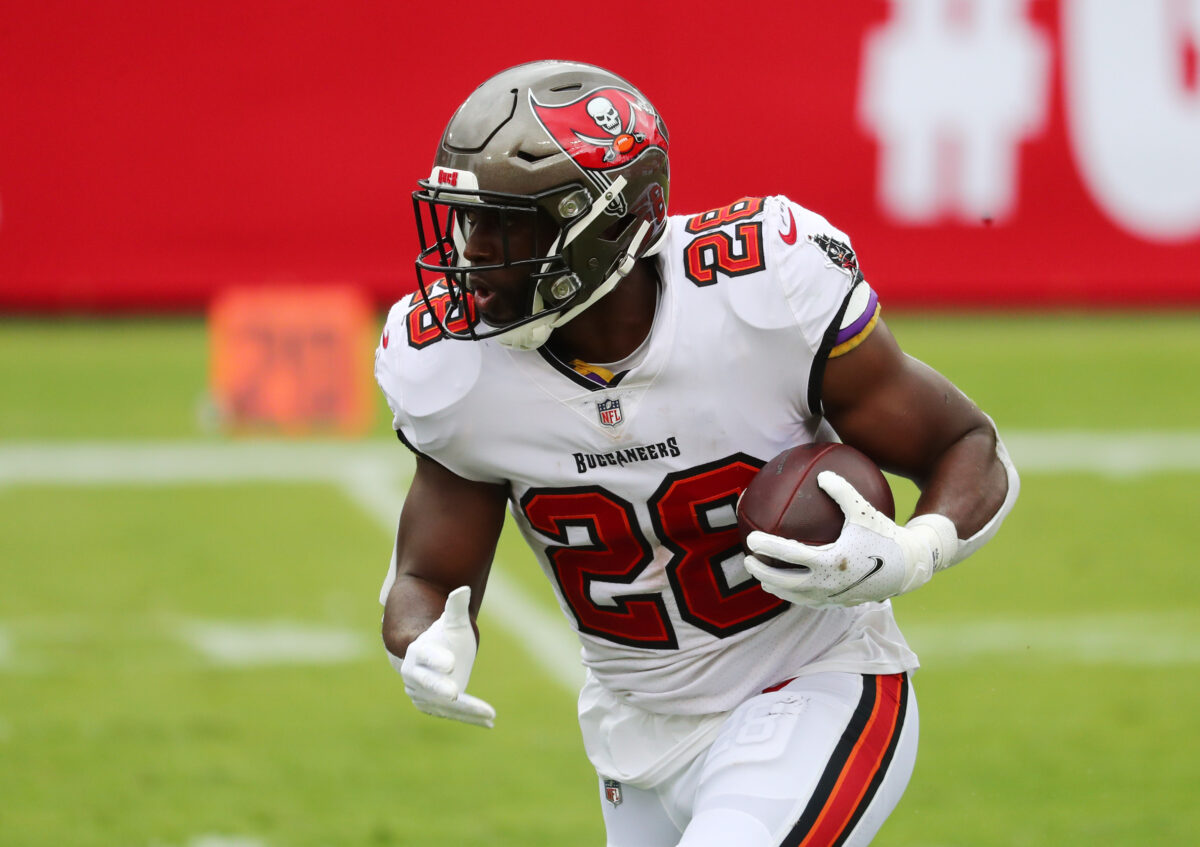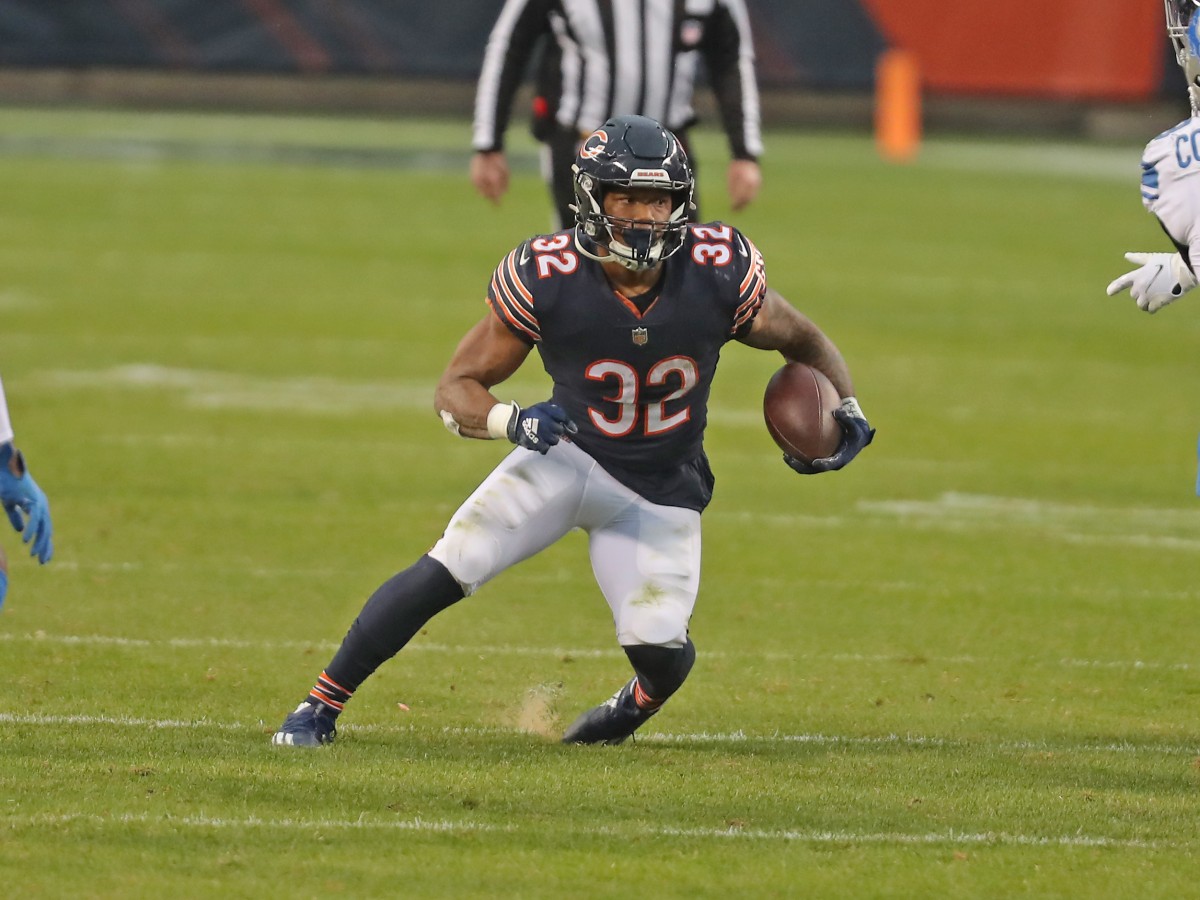| SUNDAY SALUTES |
| Quarterbacks |
Pass-Rush |
TD |
| Justin Herbert |
398 – 29 |
5 |
| Tom Brady |
411 – 13 |
5 |
| Jameis Winston |
279 – 26 |
4 |
| Josh Allen |
315 – 59 |
4 |
| Davis Mills |
312 – 2 |
3 |
| Running Backs |
Yards |
TD |
| Austin Ekeler |
17-66 rush
5-53 catch |
3 |
| Myles Gaskin |
5-25 rush
10-74 catch |
2 |
| Derrick Henry |
29-130 rush |
3 |
| Alvin Kamara |
16-71 rush
5-51 catch |
2 |
| Alexander Mattison |
25-113 rush
7-40 catch |
1 |
| Wide Receivers |
Yards |
TD |
| Davante Adams |
11-206 |
1 |
| Mike Williams |
8-165 |
2 |
| Antonio Brown |
7-124 |
2 |
| Kadarius Toney |
10-189 |
0 |
| Mike Evans |
6-113 |
2 |
| Tight Ends |
Yards |
TD |
| David Njoku |
7-149 |
1 |
| Kyle Pitts |
9-119 |
1 |
| Hunter Henry |
6-75 |
1 |
| Dawson Knox |
3-117 |
1 |
| Dalton Schultz |
6-79 |
0 |
| Placekickers |
XP |
FG |
| Greg Zuerlein |
5 |
3 |
| Greg Joseph |
1 |
4 |
| Mason Crosby |
1 |
4 |
| Nick Folk |
1 |
4 |
| Chase McLaughlin |
4 |
2 |
| Defense |
Sack – TO |
TD |
| Titans |
2 – 2 |
1 |
| Cowboys |
2 |
1 |
| Vikings |
4 – 2 |
0 |
| Eagles |
3 – 3 |
0 |
| Bills |
2 – 4 |
1 |
Bumps, Bruises and Bowouts
QB Taysom Hill – Concussion
QB Daniel Jones – Concussion
QB Joe Burrow – Throat contusion
RB Clyde Edwards-Helaire – Knee
RB Damien Harris – Ribs
RB Saquon Barkley – Ankle
WR JuJu Smith-Schuster – Shoulder
WR Deonte Harris – Hamstring
WR Quintez Cephus – Shoulder
WR Kenny Golladay – Knee
TE Maxx Williams – Leg
Chasing Ambulances
QB Daniel Jones (NYG) – Left with a concussion and was replaced by Mike Glennon, who will be the starter if Jones cannot play this weekend. The next two weeks are against the Rams and Panthers, which sport elite defenses. There’s minimal fantasy value in grabbing Glennon if he is needed to replace Jones.
QB Joe Burrow (CIN) – Was taken to a hospital with a throat contusion that he suffered during the game when someone poked their fingers into his neck. Burrow said later that he didn’t think it would keep him out this week when they play at the Lions.
RB Clyde Edwards-Helaire (KC) – He was bent backward awkwardly and was in a great deal of pain with a knee injury. He was carried from the field, and there is concern that the injury could be serious. Darrel Williams and Jerick McKinnon saw more work, with Williams the most effective with five rushes for 25 yards and three catches for 18 yards. Barring unexpected positive news, Williams will be taking over as the primary back for the Chiefs.
RB Damien Harris (NE) – He left with injured ribs, returned, and then left again. He’s worth tracking but early speculation is that he’ll be able to play this week when they host the Cowboys. Rhamondre Stevenson filled in with 11 rushes for 23 yards. Stevenson is worth owning if only because Harris has been less than durable in the past, but he seems to have left all his magic back in the preseason.
RB Saquon Barkley (NYG) – Rolled his ankle badly when he stepped on a defender’s shoe and was carted from the game. Early word has it that X-rays were negative and that it is only a low-ankle sprain. That could heal far quicker than initial expectations when his ankle immediately swelled up, and he was in considerable pain. Devontae Booker ran for 42 yards and a touchdown as a replacement in Dallas and should be owned as a handcuff by every Barkley owner. More information will given later in the week, but it appears he avoided serious injury.
WR Kenny Golladay (NYG) – Left with an unspecified knee injury that will be better explained by Wednesday. HC Joe Judge wouldn’t comment on any of the Giants’ injured players, so Golladay’s status remains unknown. Kadarius Toney had a breakout performance and will be the free agent of the week in leagues where he is still on the waiver wire.
TE Maxx Williams (ARI) – Appeared to suffer a severe injury to his right knee that was severely hyperextended in the best scenario but looks likely to be ligament damage. There’s no fantasy-relevant replacement for him among the tight ends, but he had accounted for 193 yards and a score in his first four games. That production more likely is shifted to either the running backs or wideouts like Ronald Moore.
Free Agents, Flops and Other Notables
Bye Weeks – This week starts the byes, and we lose the Falcons, Saints, Jets, and 49ers. But this is the time to plan for Week 7 when fantasy rosters take a hit without players from the Bills, Cowboys, Jaguars, Chargers, Vikings, and Steelers. Look for replacements before everyone else does next week.
TE Kyle Pitts (ATL) – The first-round rookie finally had his breakout performance with a team-high nine catches for 119 yards and one score in the win over the Jets in London. The absence of both Calvin Ridley and Russell Gage helped force Matt Ryan to seek other receivers and Cordarrelle Patterson (7-60) also helped. At least he enters his bye with one big game under his belt.
WR Devonta Smith (PHI) – He’s become a marked man for opposing defenses, but playing in Carolina, he still led the Eagles with seven catches for 77 yards from a team-high eight targets. That should be favorable for this week against the Buccaneers’ terrible secondary.
RB Chuba Hubbard (CAR) – He’s done just what they hoped when they drafted him. Christian McCaffrey’s backup ran for 101 yards on 24 carries plus caught five passes for 33 yards in the loss to the Eagles. He’ll have another good matchup against the Vikings this week if McCaffrey continues to miss games.
WR Randall Cobb (GB) – Week 3 saw Cobb with five catches for 69 yards and two scores. While it was hoped that it signaled greater use of Cobb, especially considering the loss of Marquez Valdes-Scantling. But he was held to only two catches for 30 yards by the Bengals while Davante Adams blew up again with 206 yards and a score. The Packers’ passing offense won’t ever be balanced unless an opponent can actually limit Davante Adams.
RB AJ Dillon (GB) – The Packers doled 14 carries to Aaron Jones, and he gained 103 yards, but they also gave Dillon eight runs (30 yards) in a very tight game. Both Jones and Dillon ended with four receptions, but while Jones gained only six yards, Dillon accounted for 49 yards and had a 12-yard touchdown catch. For a team that has all but abandoned the tight end as a receiver, it’s a nice direction to see the No. 2 back involved more catching passes.
RB Rhamondre Stevenson (NE) – As noted in the injury to Damien Harris, Stevenson was active for only the second time this year. He ran 11 times for 23 yards as the clear No. 2 back (for this game, anyway). Brandon Bolden only rushed twice, and he was used as the third-down back again but only gained six yards on four catches. Harris may not miss any time, but if he does, it appears that Stevenson is back in the equation. J.J. Taylor was inactive this week. The Pats host the Cowboys, who bring a Top-10 rushing defense, but in Week 7, the Patriots host the Jets No. 32 defense against running backs.
QB Davis Mills (HOU) – After posting humbling stats for three weeks, the ex-Stanford rookie threw for 312 yards and three touchdowns in one of the bigger surprises of the weekend. Mills even connected well with his wideouts that combined for 11 catches for 216 yards and two touchdowns.
WR Chris Moore (HOU) – When the Texans released Anthony Miller, they said it was to make room for Danny Amendola. But he was inactive this week, and instead, they promoted Moore from the practice squad. He manned the slot and led the team with five catches for 109 yards and scored on a 67-yard pass play. That was even more notable since it happened in the only game that Davis Mills looked comfortable and was highly productive. The Pats locked onto Brandin Cooks and shut him down. But it gave Moore a chance to play for the first time since leaving the Ravens, where he spent his first four years.
TE Dan Arnold (JAC) – The Jaguars lost DJ Chark last week, and the assumption was that Laviska Shenault would see the biggest boost in targets. It is just one week, but Shenault only caught one of his three targets for a 58-yard gain. Trevor Lawrence threw eight targets to Jamal Agnew (6-41) and the new tight end Arnold (6-64) who led the team in receiving yardage. That’s a fast assimilation into the game plan for a tight end brought over in a trade just a couple of weeks ago.
WR Amon-Ra St. Brown (DET) – The rookie made minimal impact in his first three weeks but then posted six catches for 70 yards at the Bears and then seven receptions for 65 yards at the Bears yesterday. He’s not only seen an increase in targets, but the Lions may be without Quintez Cephus, who left the game with a shoulder injury. The Lions host the Bengals this week.
WR JuJu Smith-Schuster (PIT) – The Steelers’ wideout injured his shoulder and was hospitalized during the matchup with the Broncos. He was immediately ruled out and taken directly during the game. His status should be updated on Monday, and he has already seen a decline in usage this year. If he misses time, it could help James Washington but more likely just heightens the importance of Diontae Johnson and Chase Claypool.
RB Myles Gaskin (MIA) – There is nothing reliable here, but Gaskin led the Dolphins in receiving in their loss to the Buccaneers. He ended with ten catches for 74 yards and two touchdowns. Those were his first scores on the year and more receiving production than from his first four games combined.
WR Marquez Callaway (NO) – After minimal production to start the year, Callaway is getting on track. He scored in Week 3, then gained 74 yards on two catches in Week 4. At Washington, he led the Saints with four receptions for 85 yards and two touchdowns. The Saints are on bye this week, but their next three opponents are the Seahawks, Buccaneers, and Falcons – all advantageous matchups.
TE David Njoku (CLE) – After never catching more than three passes in any game this year, Njoku became the leading receiver in the loss to the Chargers. He caught all seven targets for 149 yards and one score. He broke a tackle and scored on a 72-yard catch. The Browns will always run first, and it took a game that became an 89-point shootout. But Njoku stepped up when the Browns were forced to pass.
RB Khalil Herbert, RB Damien Williams (CHI) – With David Montgomery on the shelf for the next month or so, the Bears turned to a dual attack relying on both Khalil Herbert (18-75) and Damien Williams (16-64, TD) to great effect. Williams added two receptions for 20 yards. But both backs were used in equal measure for the entire game.
QB Trey Lance (SF) – The rookie’s first start only completed 15-of-29 for 192 yards and one interception, but he was the leading rusher with 16 runs for 89 yards in the loss to the Cardinals. The downside of a running quarterback is that the backfield shared just 11 carries, and only Deebo Samuel (3-58) managed more than 35 receiving yards. Lance only started for one full season in college, so he’s very raw. He adds fantasy value as a rusher, but it comes at the expense of all the other offensive players.
WR Kadarius Toney (NYG) – The Giants’ offense imploded against the Cowboys with injuries to their quarterback, running back, and No. 1 wide receiver. But Toney became the best weapon with 13 targets for ten catches that gained 189 yards. He even ran for seven yards. He earned more work with six receptions for 78 yards in Week 4. He looked like the No. 1 receiver for the Giants – and could be if Golladay’s injury proves to be serious.
Huddle player of the week
Justin Herbert – The second-year quarterback has a tougher schedule for 2021, and he started slowly with only one score in each of the first two games. But he’s roared back with a vengeance and comes off his season-best effort with 398 yards and four passing touchdowns, plus he ran in a fifth score on his four rushes for 29 yards in his shootout win over the Browns.
Salute!
Drama 101 – Somebody has to laugh, somebody has to cry
| Comedy |
Yards |
TDs |
Tragedy |
Yards |
TDs |
| QB |
David Mills |
314 |
3 |
QB |
Russell Wilson |
162 |
1 |
| RB |
Myles Gaskin |
99 |
2 |
RB |
Saquon Barkley |
9 |
0 |
| RB |
Devontae Booker |
58 |
2 |
RB |
Melvin Gordon |
43 |
0 |
| WR |
Kadarius Toney |
189 |
0 |
WR |
Kenny Golladay |
0 |
0 |
| WR |
Chris Moore |
109 |
1 |
WR |
D.J. Moore |
39 |
0 |
| WR |
Chris Conley |
84 |
1 |
WR |
A.J. Brown |
38 |
0 |
| TE |
David Njoku |
149 |
1 |
TE |
Darren Waller |
45 |
0 |
| PK |
Greg Zuerlein |
5 XP 3 FG |
PK |
Daniel Carlson |
1 FG |
| Huddle Fantasy Points = 153 |
Huddle Fantasy Points = 31 |
Now get back to work…

